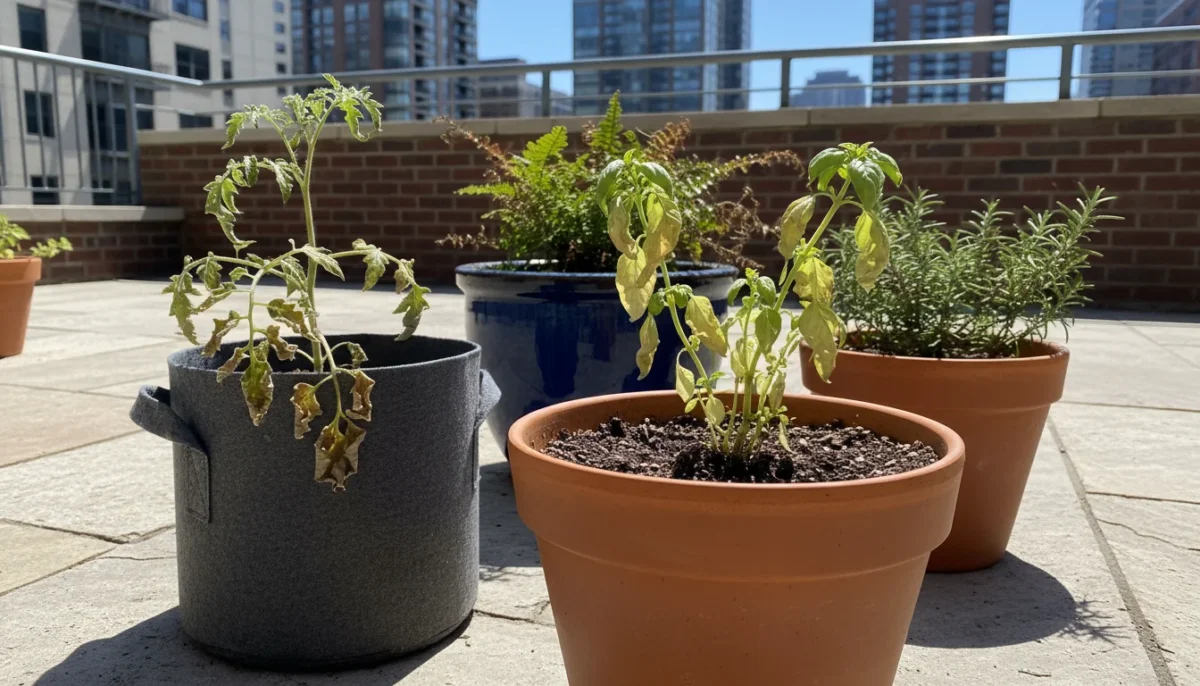Summer brings the joy of lush green spaces and vibrant blooms, but it also introduces a significant challenge for gardeners: intense heat. For those cultivating small gardens, whether on balconies, patios, or in compact yards, protecting your plants from the scorching sun and soaring temperatures becomes a priority. Understanding how heat impacts your precious greenery and adopting proactive, simple strategies ensures your small garden remains a thriving oasis, not a wilting disappointment. You can maintain healthy plants without complex routines, even when the thermometer climbs.
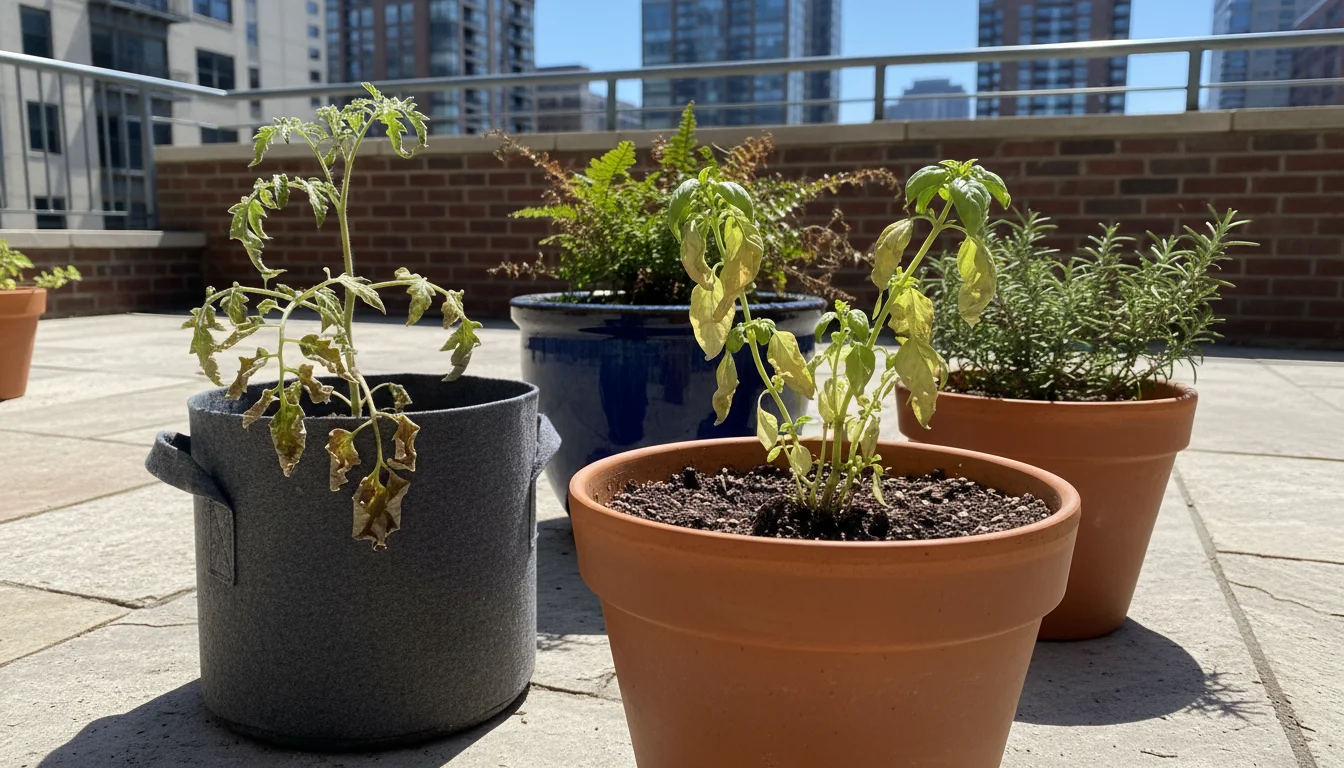
Understanding Summer Heat Stress: What Happens to Your Plants
Your plants, like you, feel the effects of extreme heat. When temperatures rise significantly, plants undergo what we call heat stress. This condition impacts their ability to perform essential life processes, primarily photosynthesis and water absorption. Imagine trying to run a marathon in a sauna; your body struggles to regulate its temperature and stay hydrated. Plants experience a similar challenge.
At a cellular level, heat stress causes proteins to denature, meaning they lose their structure and can no longer function correctly. This directly impairs photosynthesis, the process by which plants convert sunlight into energy. Chlorophyll, the green pigment responsible for capturing light, degrades under excessive heat, leading to yellowing or browning leaves. When photosynthesis slows down, plant growth grinds to a halt, and in severe cases, plants begin to decline rapidly.
Another critical impact involves water. Plants lose water through transpiration, a process where water vapor evaporates from tiny pores on their leaves called stomata. This process helps cool the plant, similar to how sweating cools your body. However, during intense heat, transpiration rates can become excessively high, causing the plant to lose water faster than its roots can absorb it from the soil. This leads to dehydration, even if the soil itself holds moisture. The plant then closes its stomata to conserve water, but this also prevents carbon dioxide from entering, further inhibiting photosynthesis.
Root systems also suffer. High soil temperatures can damage root cells, reducing their ability to absorb water and nutrients. In small containers, this effect is amplified because the soil volume is limited and heats up much faster than in a large garden bed. Compacted or poorly drained soil exacerbates the problem, as roots struggle to access both water and oxygen.
Understanding these physiological responses helps you anticipate and address the needs of your summer heat stress plants. Preventing heat stress involves not only providing adequate water but also implementing strategies that reduce the plant’s overall temperature and conserve its internal moisture.
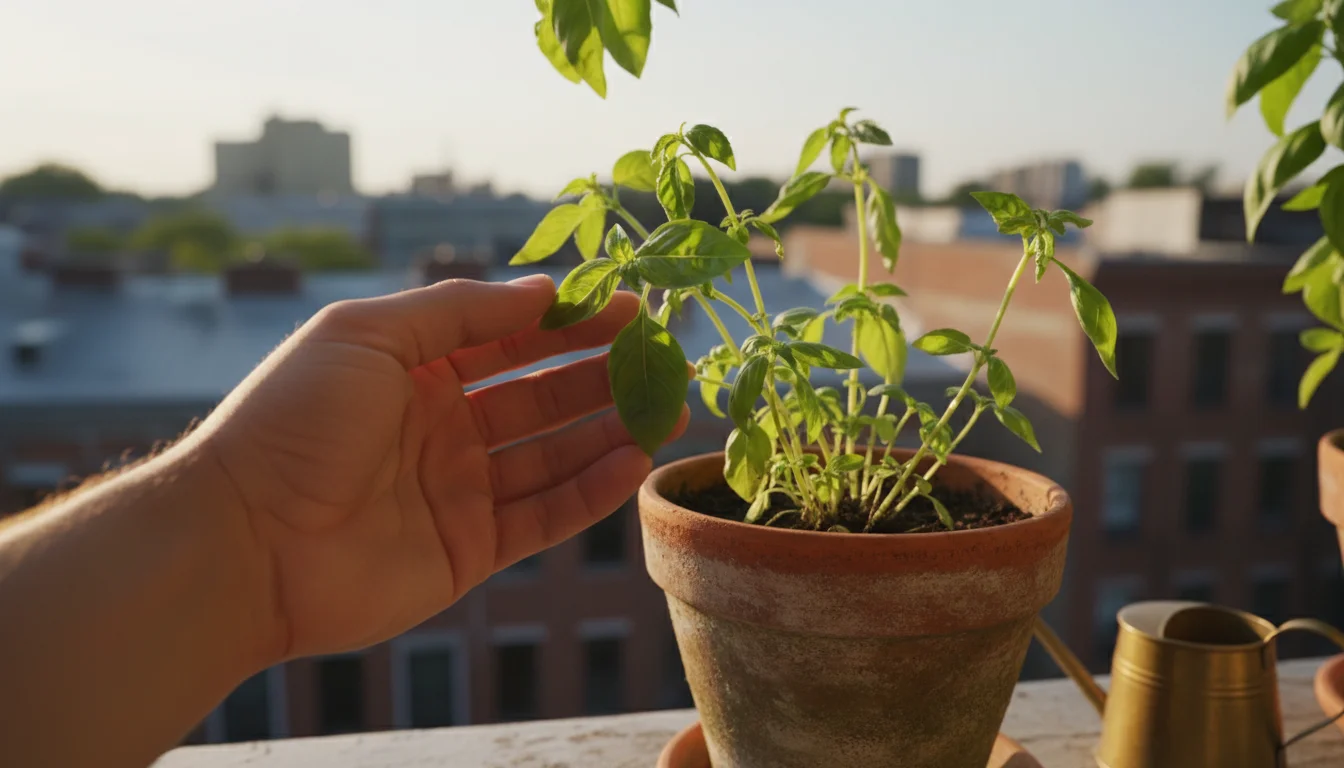
Spotting the Signals: How to Identify Heat-Stressed Plants
Recognizing the early signs of heat stress allows you to intervene before serious damage occurs. Your plants communicate their discomfort through visible cues. Learning to read these signals empowers you to act quickly and effectively, providing timely plant protection.
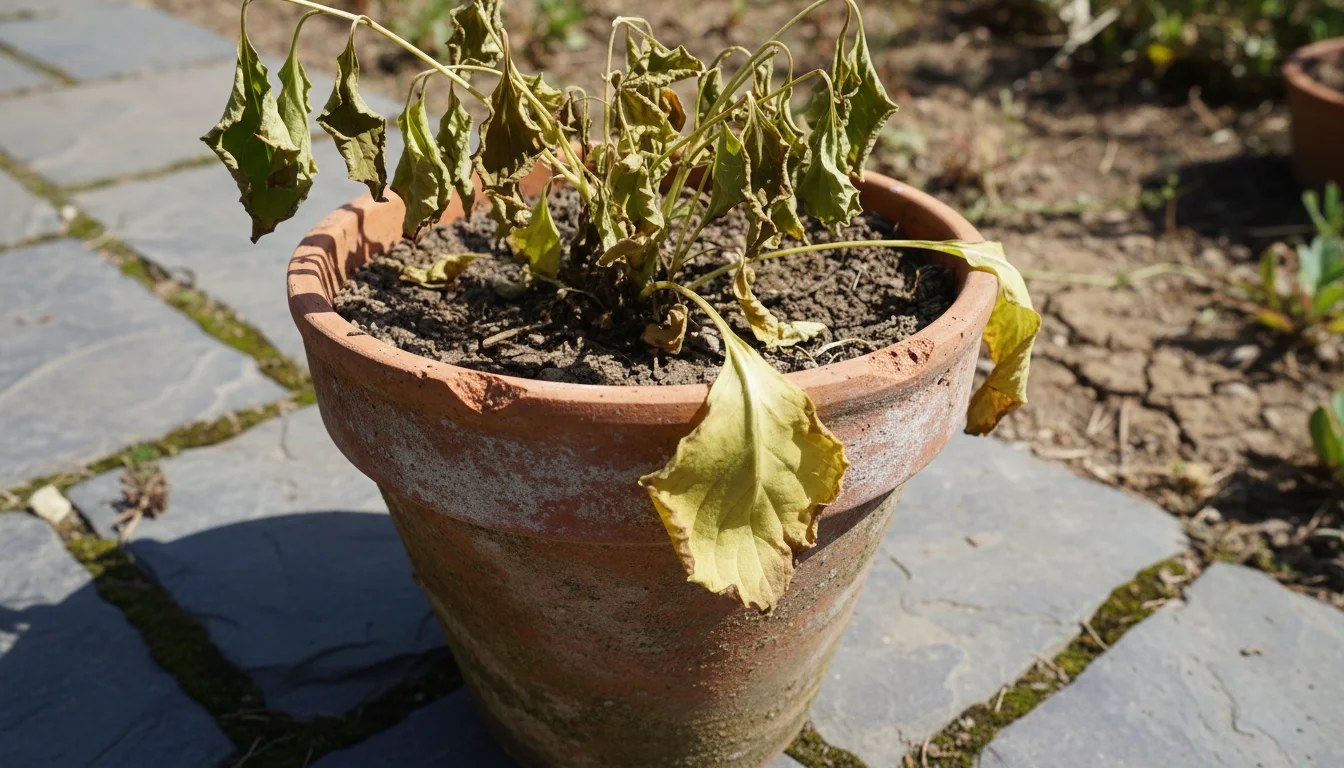
Common Symptoms of Heat Stress:
- Wilting: This is often the first and most obvious sign. Leaves droop and look limp. While wilting can also indicate underwatering, heat-induced wilting occurs even when the soil feels moist. It is the plant’s attempt to reduce the surface area exposed to the sun and minimize water loss. If wilting persists after the heat of the day passes, your plant needs attention.
- Leaf Scorch and Browning: The edges or tips of leaves turn brown and crispy, or entire leaves develop brown patches. This happens when plant cells literally burn and die due to excessive heat and dehydration. It is particularly common on the parts of the plant most directly exposed to intense sunlight.
- Yellowing Leaves (Chlorosis): While yellowing can signal nutrient deficiencies, when accompanied by wilting or scorching, it points to heat stress. The chlorophyll, vital for photosynthesis, degrades under high temperatures.
- Stunted Growth or No New Growth: Plants prioritize survival during stress. They stop expending energy on new growth, leading to a noticeable slowdown or complete halt in development. You might observe smaller leaves or fewer flowers than usual.
- Flower or Fruit Drop: Plants under severe stress often abort flowers or young fruits to conserve energy and water. This is a survival mechanism to reduce the demand on the plant’s resources. If your usually prolific tomato plant is dropping its blossoms, heat is a likely culprit.
- Leaf Curl or Roll: Some plants curl their leaves inward or roll them up tightly. This reduces the surface area exposed to direct sun and helps trap a pocket of cooler, moister air around the leaf surface, decreasing transpiration.
Observe your plants regularly, especially during heatwaves. Pay close attention to changes in leaf texture, color, and posture. Early detection allows for immediate action, often preventing irreversible damage. If you notice several of these symptoms appearing simultaneously, it strongly indicates that your plants are battling the summer heat.
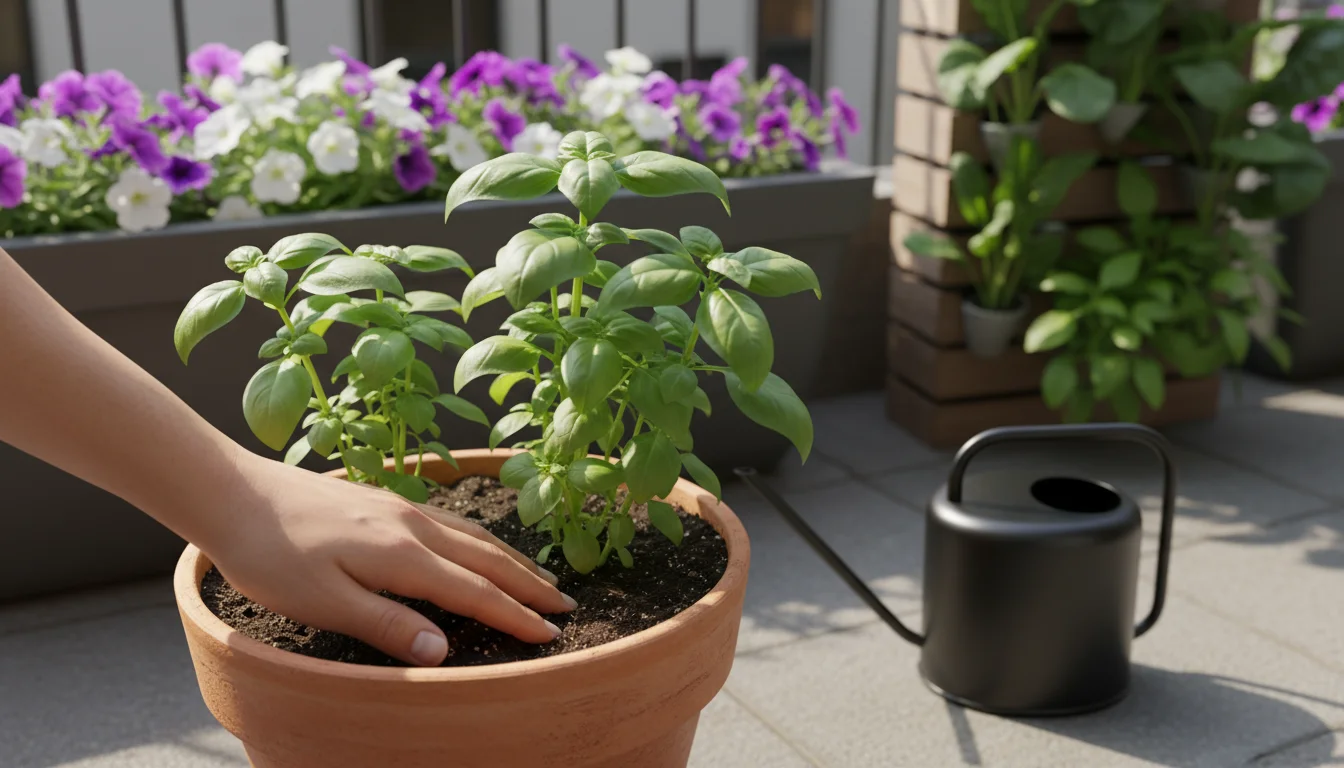
Mastering Summer Watering: Your Essential Guide to Hydration
Proper watering summer plants is the cornerstone of combating heat stress. It is not simply about pouring water; it is about understanding when, how much, and how often to water to maximize effectiveness and minimize waste. In small gardens, where containers often dry out quickly, precise watering becomes even more critical.
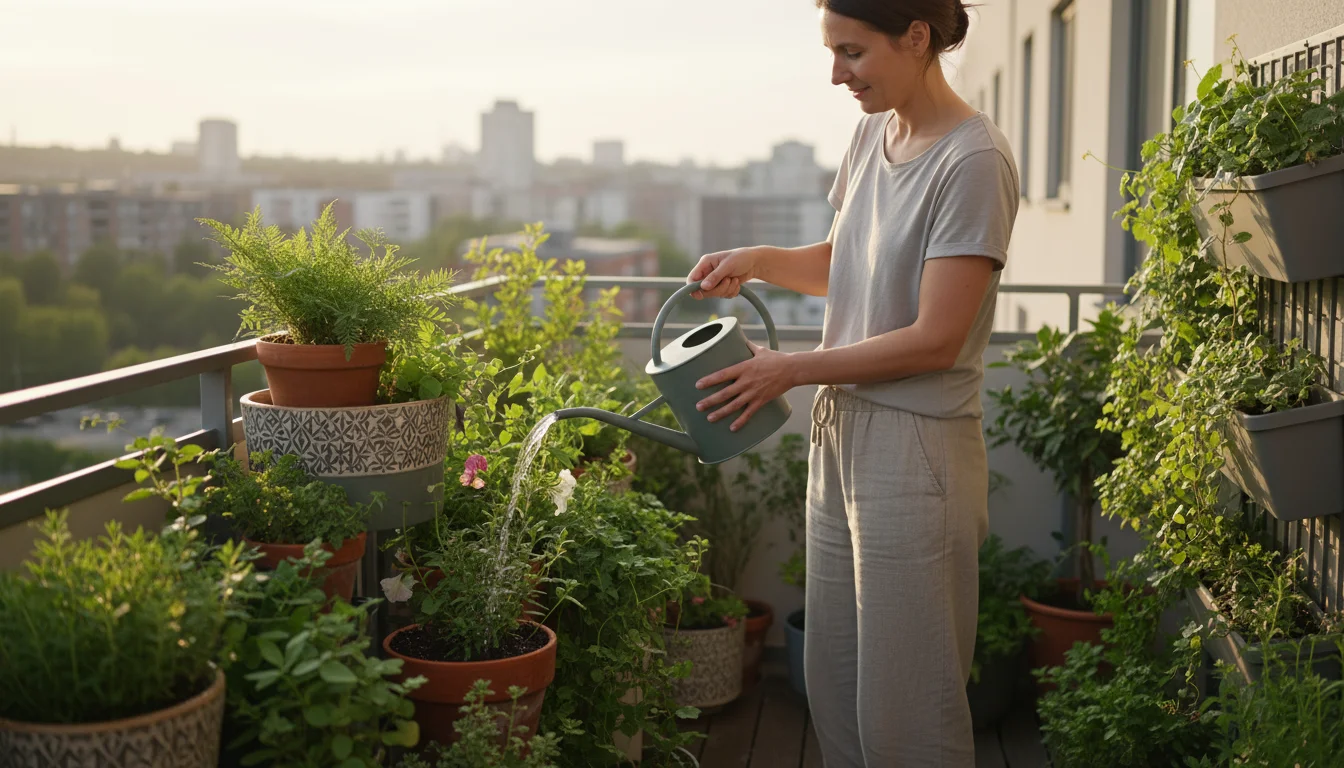
When to Water: Timing is Everything
The best time to water is early in the morning, between 6:00 AM and 9:00 AM. Watering at this time allows the plants to absorb water before the intense heat of the day causes rapid evaporation. It also ensures the leaves have time to dry before evening, reducing the risk of fungal diseases. Watering in the late evening can also be effective, but leaves may remain wet overnight, which can encourage disease. Avoid watering in the middle of the day, as most of the water will evaporate before reaching the roots, and water droplets on leaves can act as tiny magnifying glasses, scorching foliage.
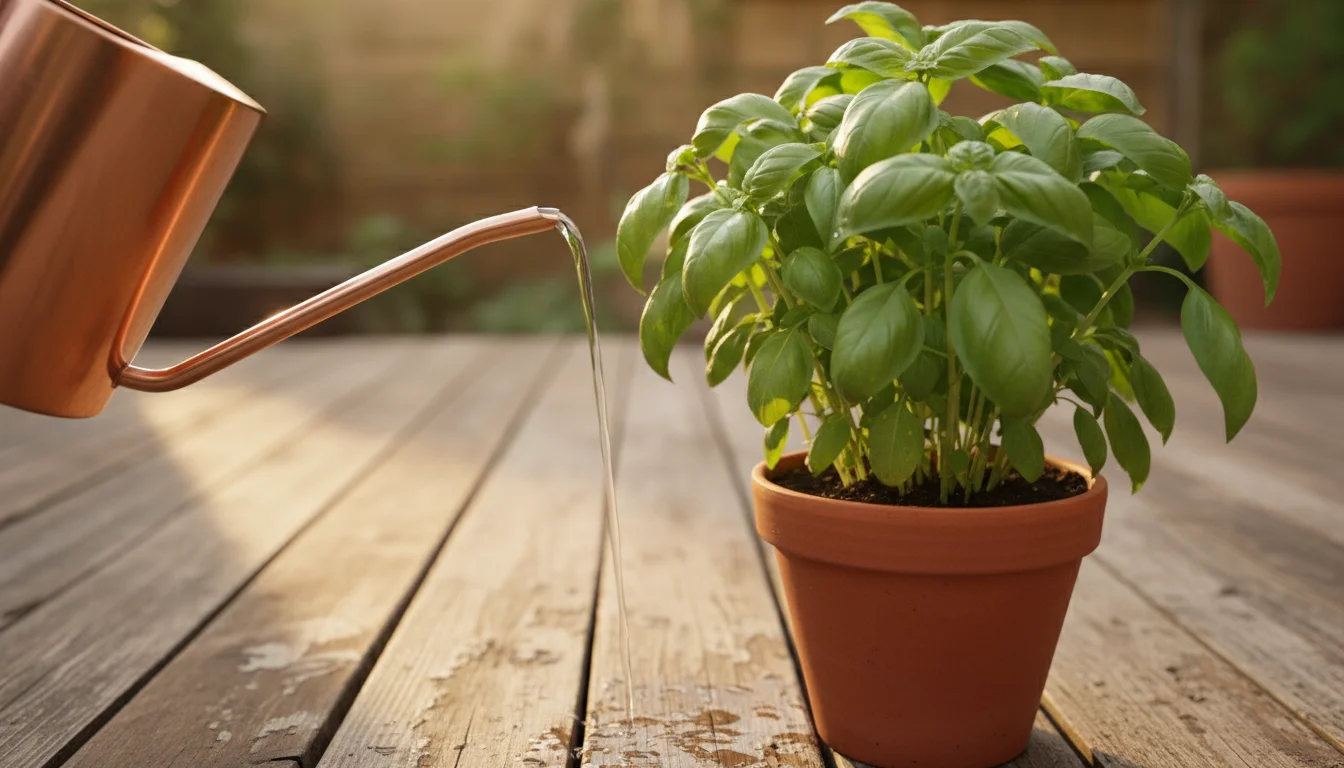
How Much to Water: Deep and Thorough
Deep watering is crucial. Instead of frequent, shallow watering, aim to water thoroughly so that moisture penetrates deep into the soil. This encourages roots to grow downwards, seeking out that moisture, making the plant more resilient to dry spells. Shallow watering promotes shallow root systems, which are more vulnerable to drying out.
The Finger Test for Soil Moisture:
- Insert your finger about 2 inches deep into the soil.
- If the soil feels dry at that depth, it is time to water.
- If it feels moist, check again in a day or two.
For larger containers or garden beds, you might need to insert your finger deeper, up to 4-6 inches. You can also use a moisture meter for a more precise reading.
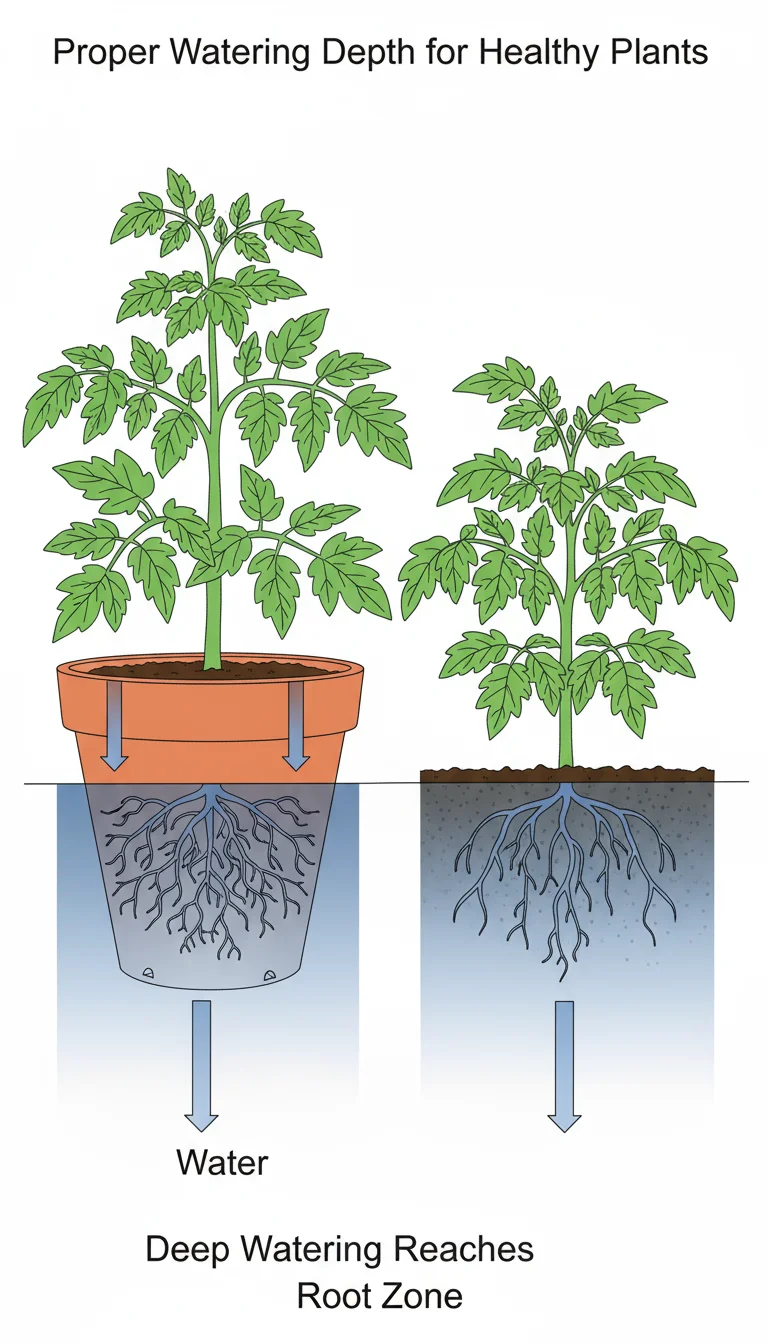
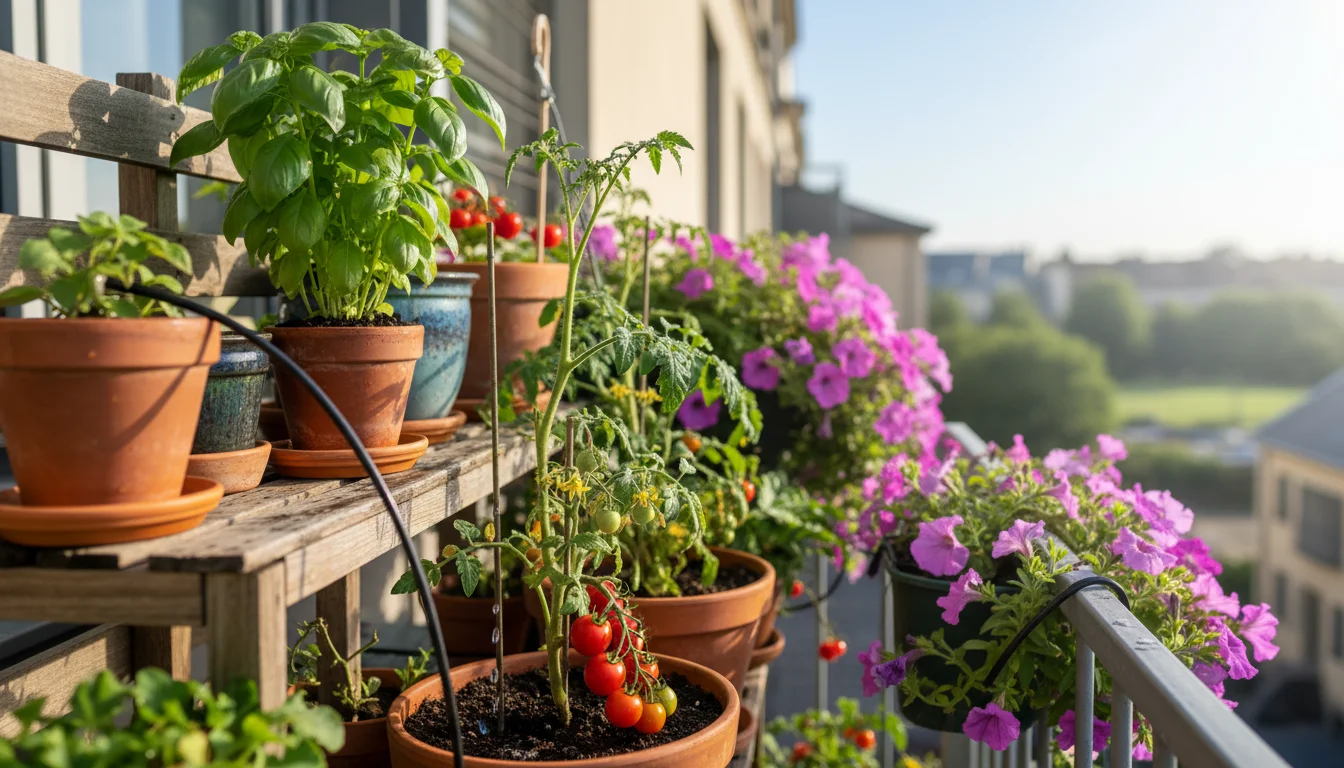
How to Water: Methods for Efficiency
- Slow and Steady: Water slowly at the base of the plant. This allows the soil to absorb water gradually without runoff. A gentle stream is better than a forceful gush. For containers, water until you see water draining from the bottom holes.
- Target the Roots: Direct water to the soil around the plant’s base, not on the foliage. Wet leaves, especially in direct sun, can lead to scorched spots or create conditions ripe for fungal issues.
- Consider Drip Irrigation or Soaker Hoses: For slightly larger small gardens, these systems deliver water directly to the root zone slowly and efficiently, minimizing evaporation and ensuring consistent moisture. They are an excellent investment for water-wise gardening.
- Self-Watering Containers: These containers have a reservoir at the bottom that provides water to the roots as needed. They are a game-changer for busy gardeners or those with very thirsty plants, significantly reducing the frequency of watering.
Adjust your watering summer schedule based on daily temperatures, wind, and plant type. Thirsty plants like impatiens or fuchsias may need daily watering, while succulents can go much longer. Monitor your plants, and they will tell you when they need a drink.
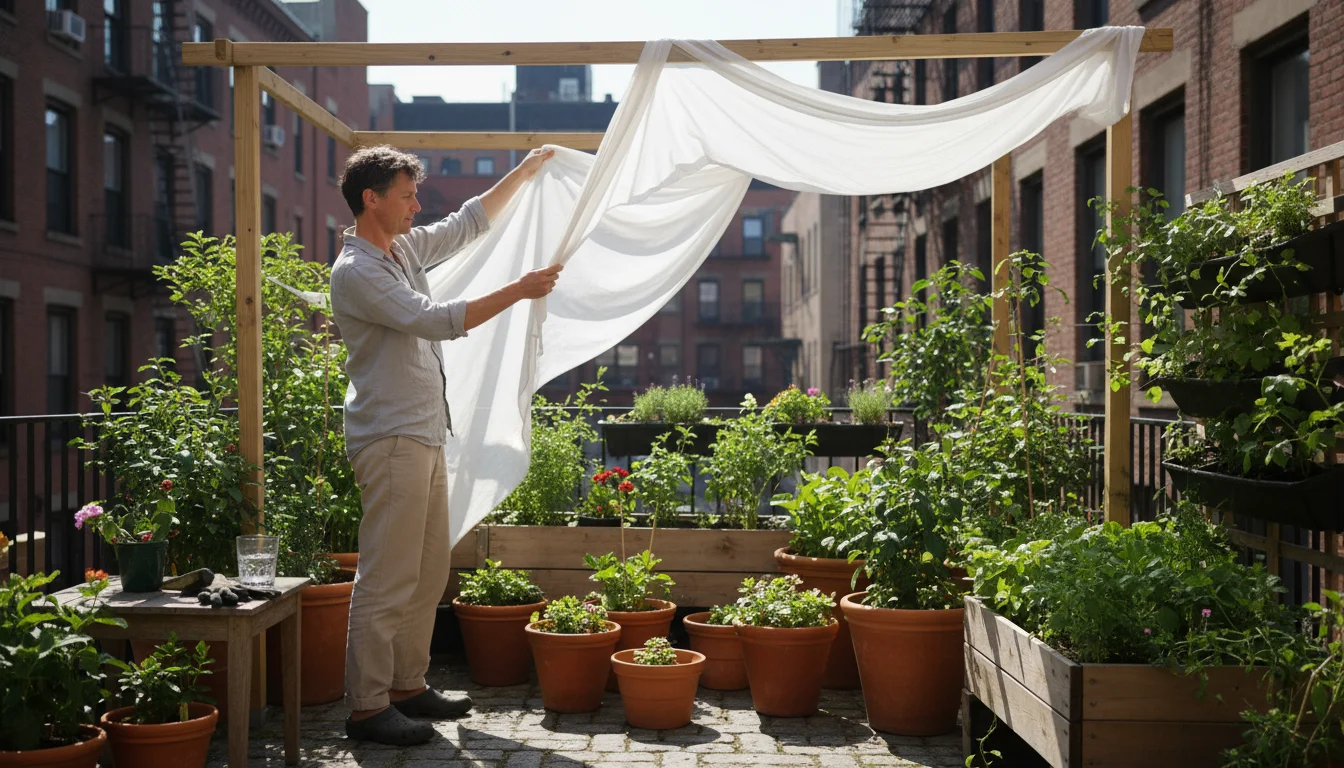
Shielding Your Plants: Effective Protection Strategies
Beyond watering, implementing physical plant protection measures can significantly reduce heat stress. These strategies create a cooler microclimate around your plants, buffering them from the harshest elements. They are simple to apply and yield substantial benefits for your small garden.
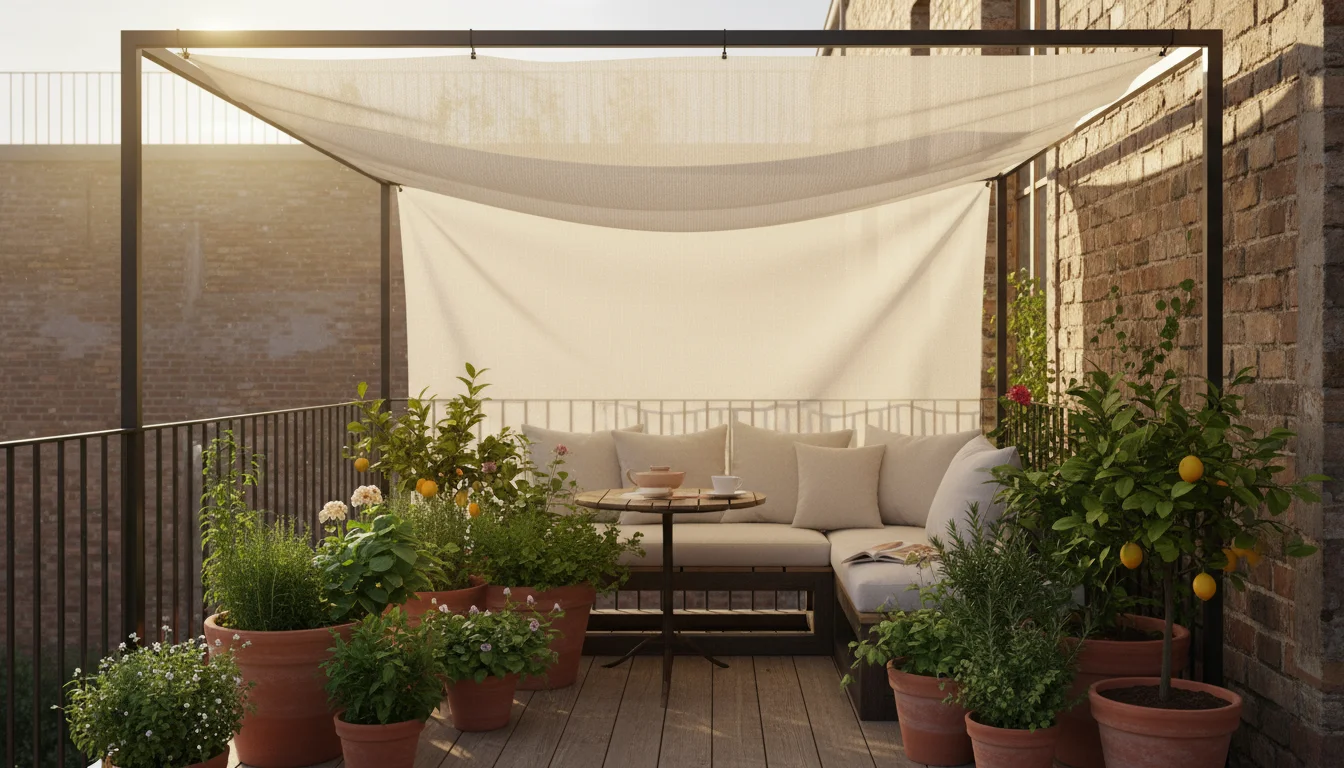
Provide Shade: Your Plants’ Best Friend
Direct afternoon sun, especially in summer, can be relentless. Many plants thrive with morning sun but struggle in the intense heat from noon to 4 PM. Providing temporary or permanent shade during these hours is one of the most effective ways to prevent scorching and reduce water loss.
- Shade Cloth: This is a highly effective solution. You can drape shade cloth over a simple frame or stakes, providing 30-50% shade. It allows light through but filters out the most intense UV rays and heat. It is easy to install and remove as needed.
- Umbrellas or Patio Covers: For container gardens on balconies or patios, a patio umbrella or an existing pergola can offer excellent relief. Position them to cast shade during the hottest part of the day.
- Companion Planting or Taller Plants: Utilize taller, heat-tolerant plants to cast natural shade on more sensitive, smaller plants. For example, plant heat-loving corn or sunflowers on the west side of your garden to protect leafy greens or herbs.
- Relocation: If you have potted plants, move them to a naturally shadier spot during peak heat, such as under a tree, beside a building, or on the east side of your home.
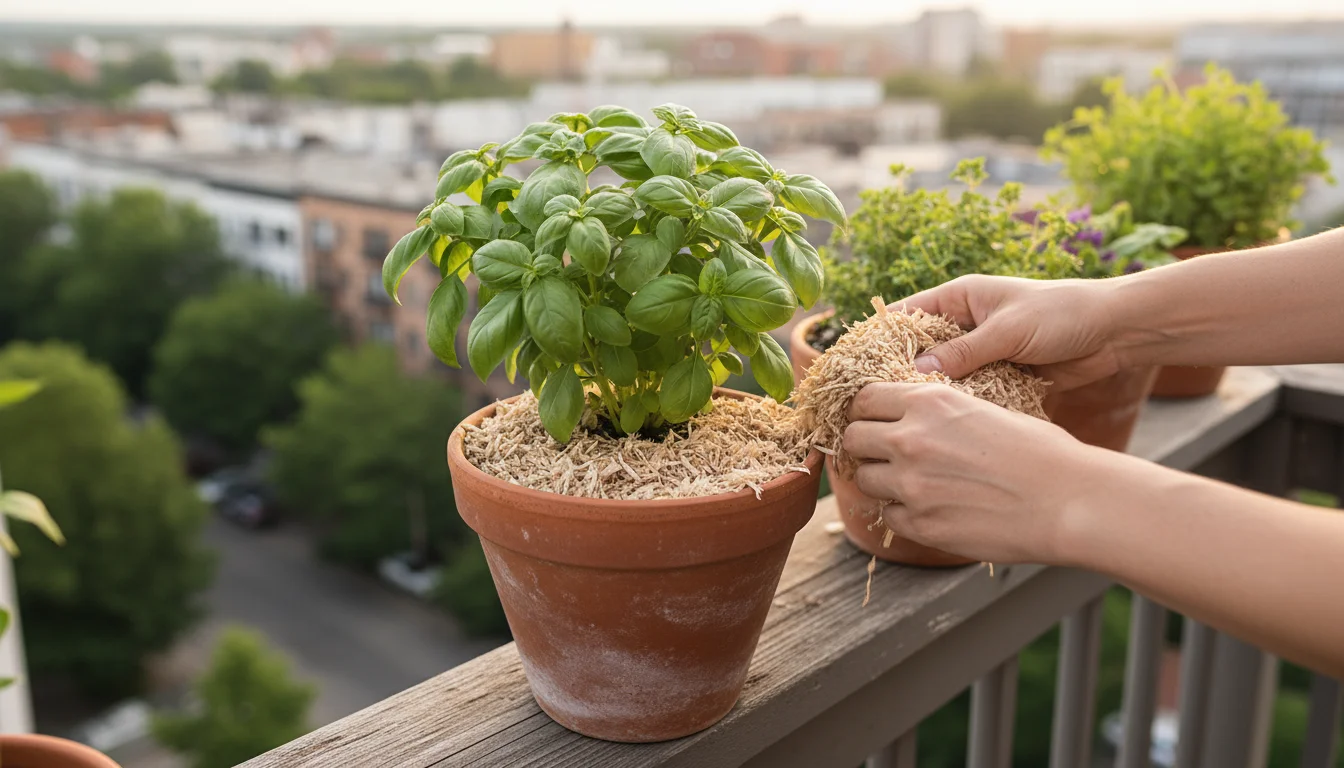
Mulch: The Soil’s Protective Blanket
Mulching is a simple yet powerful technique for plant protection. A layer of organic material applied to the soil surface acts as an insulator, keeping soil temperatures cooler and reducing moisture evaporation. It also helps suppress weeds, which compete for water and nutrients.
- Type of Mulch: Organic mulches like straw, shredded bark, wood chips, or compost are ideal. They break down over time, enriching the soil. Aim for a 2-4 inch layer.
- Benefits of Mulch:
- Reduces Soil Temperature: Mulch blocks direct sunlight from hitting the soil, keeping root zones significantly cooler.
- Retains Moisture: It slows down evaporation, meaning you need to water less frequently, conserving water.
- Suppresses Weeds: A thick layer of mulch prevents weed seeds from germinating and blocks light from existing weeds.
- Improves Soil Health: As organic mulches decompose, they add valuable organic matter to the soil, enhancing its structure and fertility.
- Application Tips: Apply mulch to moist soil. Keep it a few inches away from plant stems to prevent rot or pest issues.
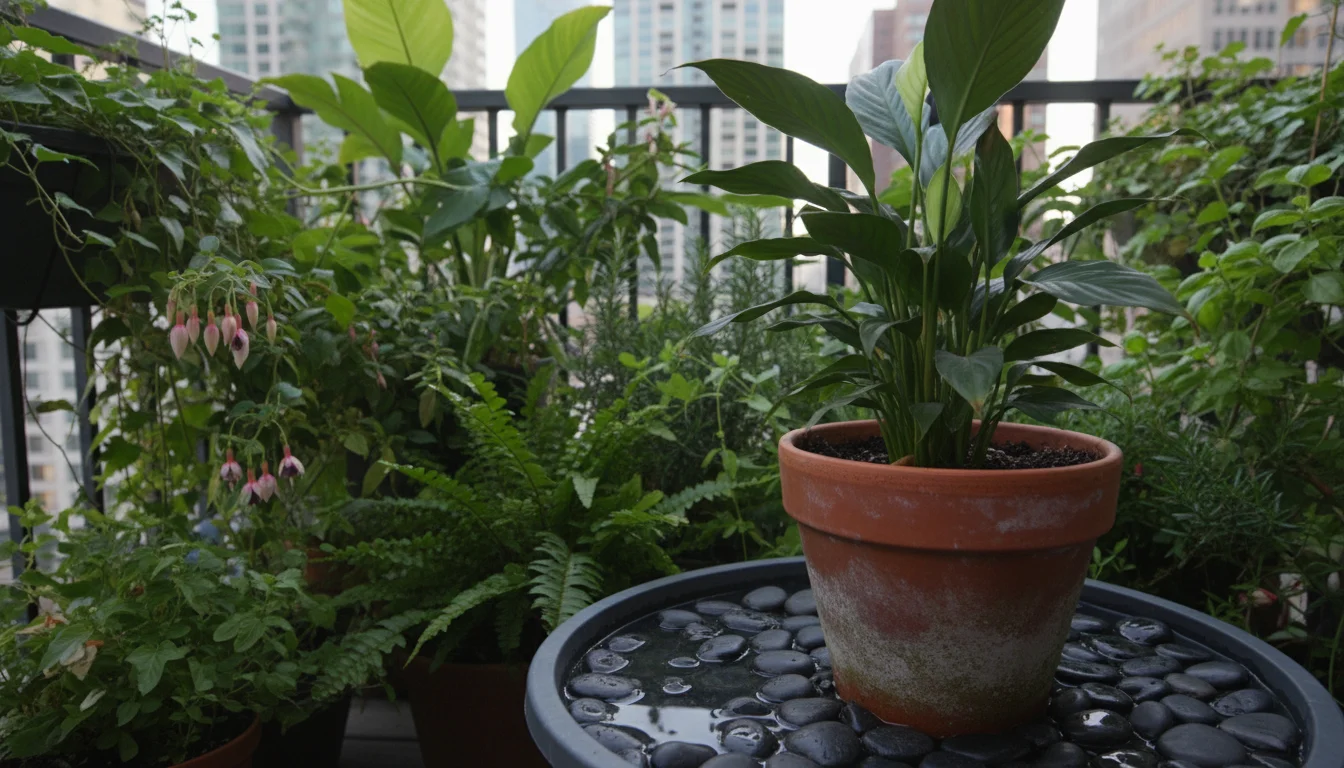
Increase Humidity: A Breath of Fresh Air
While not a primary strategy, increasing ambient humidity can offer some relief, especially for humidity-loving plants. Grouping plants together creates a microclimate where transpiration from one plant benefits its neighbors. For indoor plants, a pebble tray with water can help, or a humidifier during extreme dry heat.
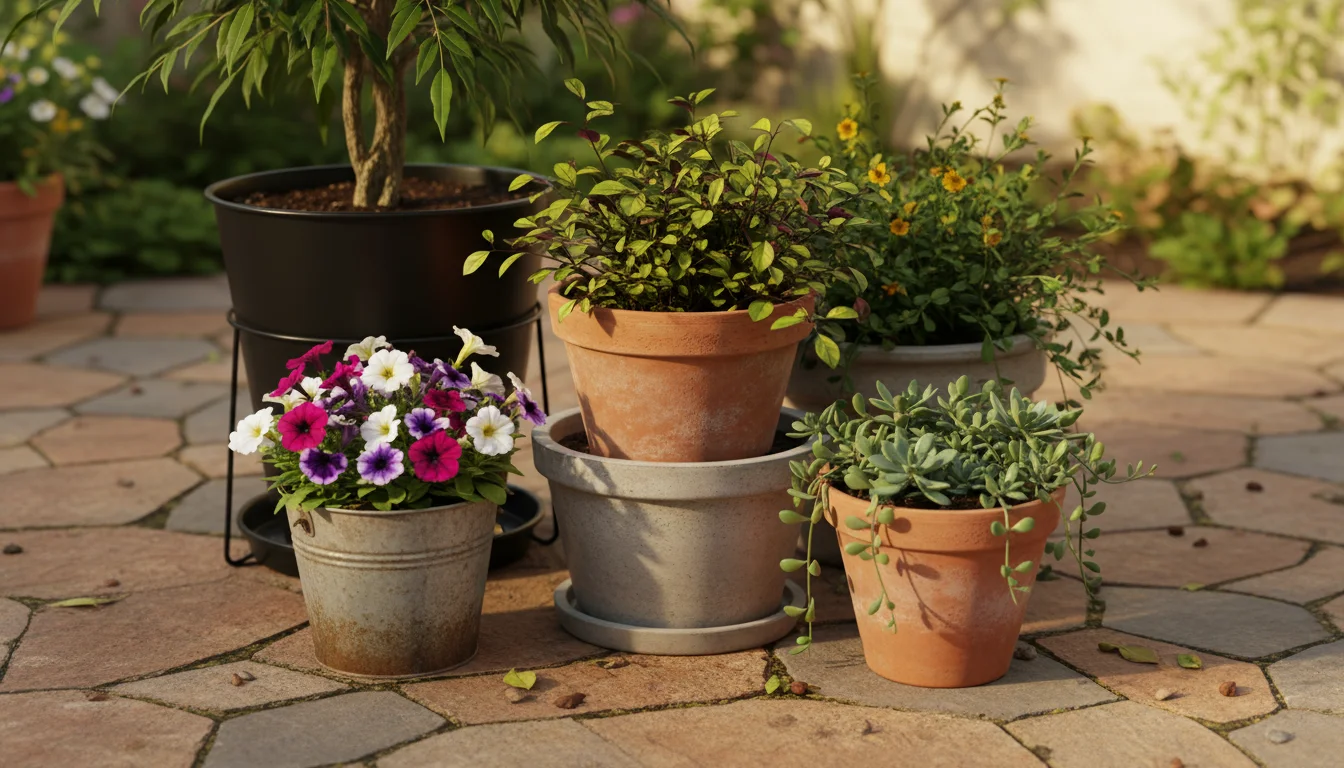
Container Plant Care: Keeping Potted Favorites Cool
Container gardens, a staple of small-space living, face unique challenges during summer heat. The limited soil volume in pots means they heat up faster and dry out more rapidly than plants in the ground. Effective plant protection for containers requires specific strategies.
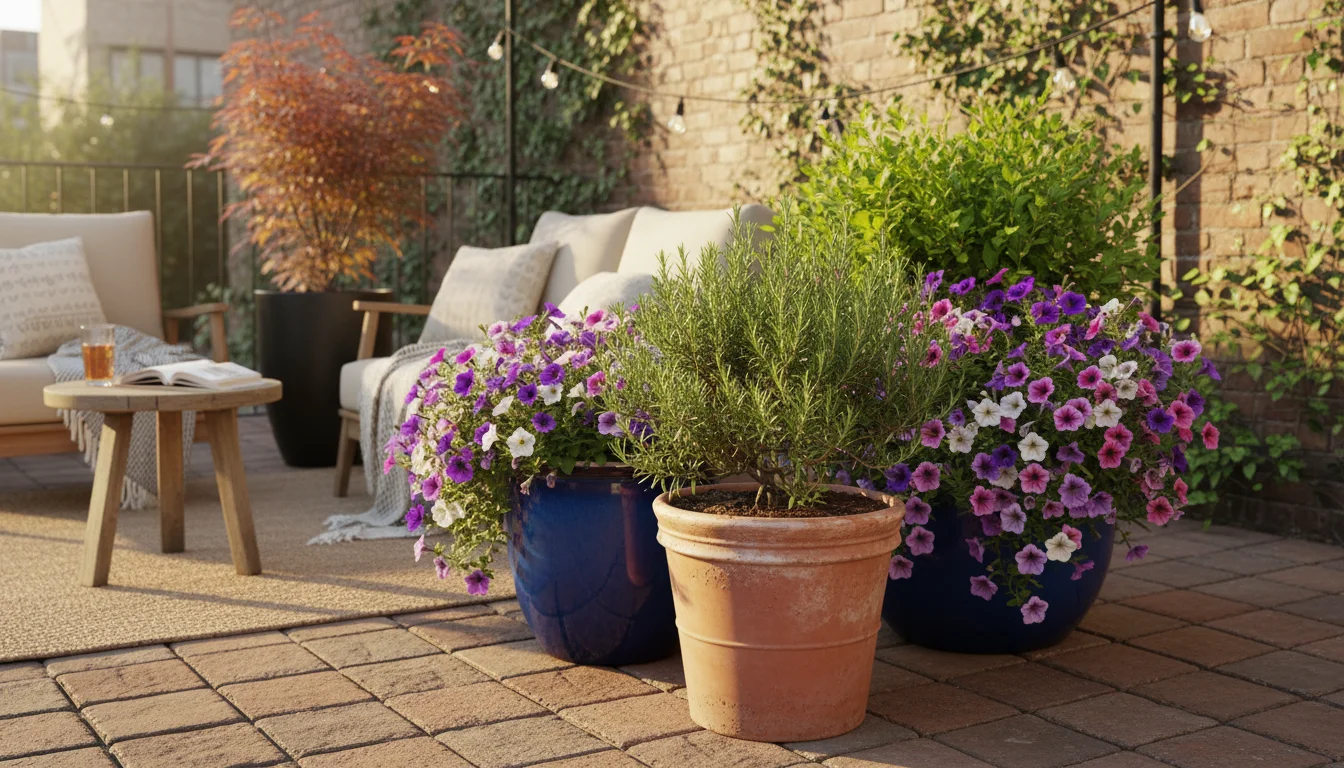
Choosing the Right Containers: Material and Color
Your choice of pot material significantly impacts soil temperature.
- Terracotta Pots: While attractive and breathable, terracotta is porous, causing water to evaporate rapidly from its sides. This can be a disadvantage in extreme heat, as plants dry out very quickly. Glazed terracotta retains moisture better.
- Plastic Pots: These are generally good at retaining moisture and are lighter. However, dark-colored plastic pots absorb and retain more heat, potentially scorching roots. Opt for lighter-colored plastic pots.
- Ceramic or Glazed Pots: These materials retain moisture well and do not heat up as much as dark plastic or unglazed terracotta.
- Fabric Pots (Grow Bags): These allow for excellent air circulation to the roots, which can help keep them cooler. They also drain exceptionally well, so you will need to monitor watering closely.
- Insulated Pots: Some newer pots come with double walls or insulation, designed specifically to protect roots from temperature fluctuations.
Whenever possible, choose lighter-colored pots, as they reflect sunlight rather than absorbing it, keeping the root zone cooler. If you have dark pots, consider painting them a lighter color or placing them inside a larger, lighter-colored pot (pot-in-pot method).
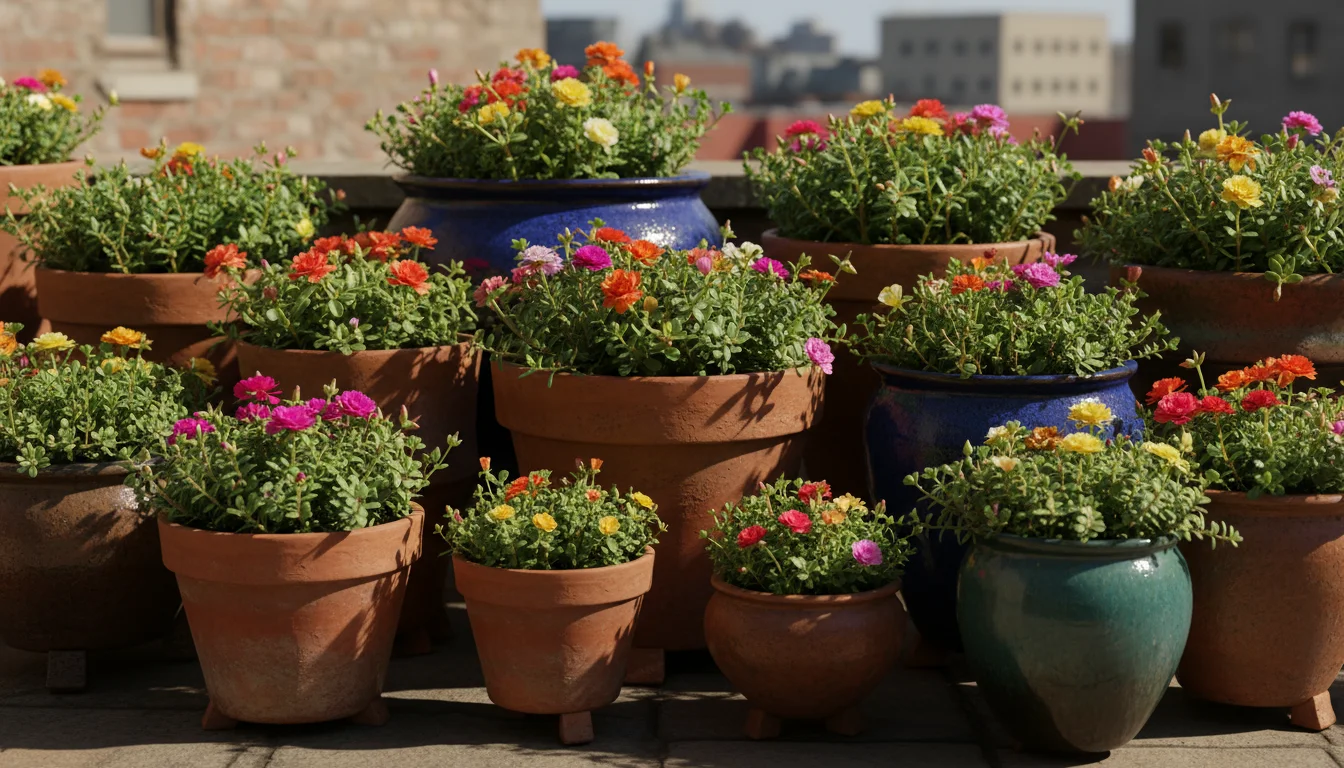
Elevating and Grouping Containers
Placing pots directly on hot surfaces like concrete or asphalt can transfer significant heat to the root zone. Use pot feet or risers to lift containers off these surfaces, allowing air to circulate underneath and preventing direct heat transfer. This simple step can dramatically reduce soil temperatures.
Grouping containers closely together creates a microclimate with increased humidity. The plants transpire, releasing moisture into the air, which then benefits their neighbors. This collective effort provides some mutual plant protection from the drying effects of wind and heat.
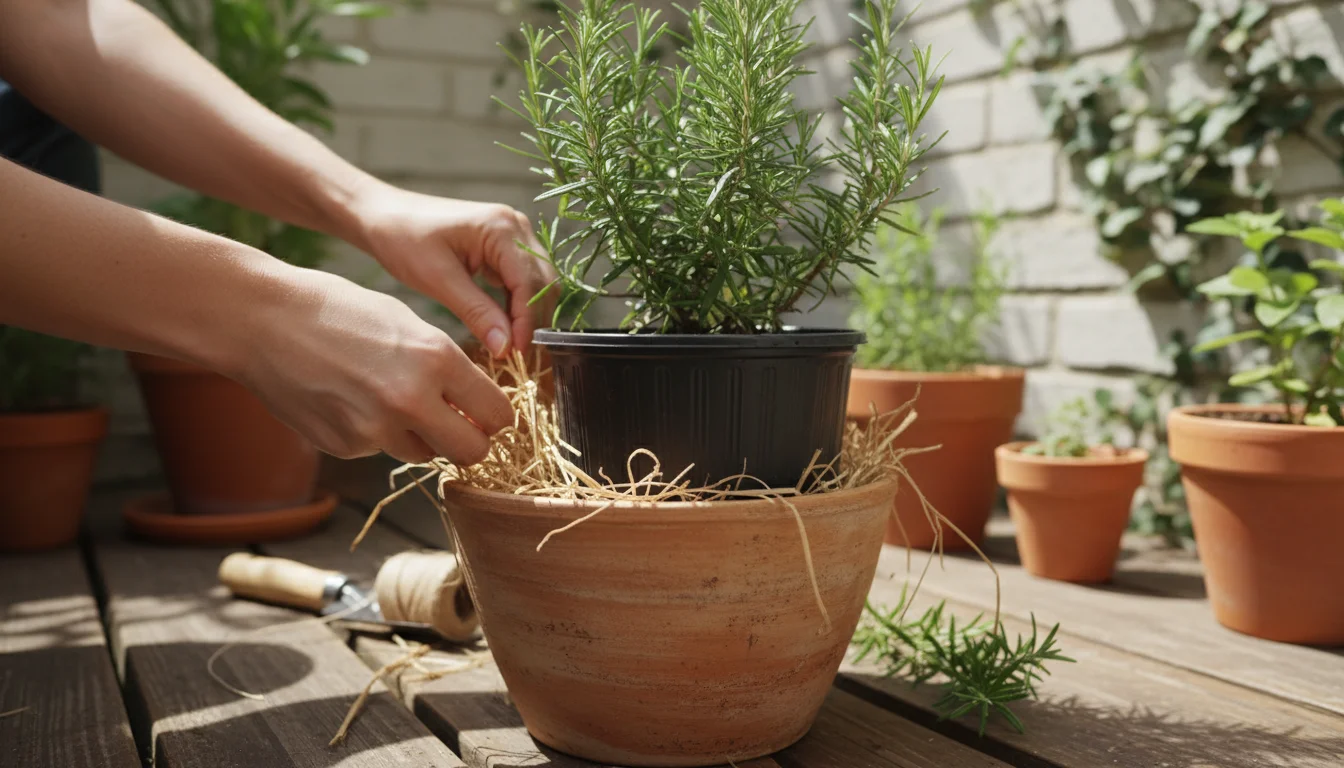
The Pot-in-Pot Method
This technique offers excellent insulation for individual containers. Plant your specimen in a slightly smaller pot (the inner pot) and then place this entire pot inside a larger, decorative outer pot. Fill the space between the two pots with insulating material such as straw, bark mulch, or even crumpled newspaper. This air gap or insulating layer acts as a buffer against extreme temperatures, keeping roots cooler in summer and warmer in winter.
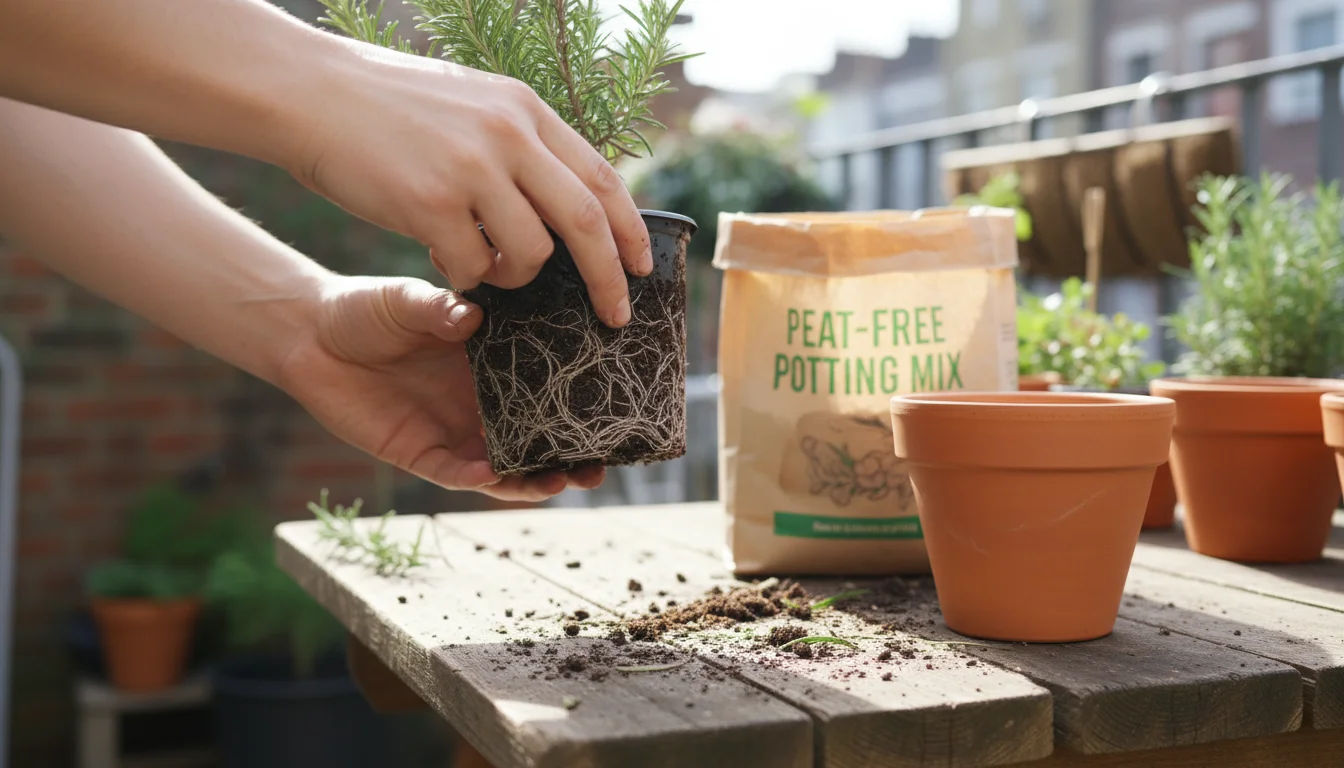
Regular Monitoring and Repotting
Regularly check the moisture levels of your container plants. Due to their limited soil volume, they often require more frequent watering summer. Be especially vigilant during heatwaves.
Plants can also become “root-bound,” meaning their roots circle tightly around the pot, indicating they have outgrown their space. This reduces their ability to absorb water and nutrients, making them more susceptible to heat stress. Repotting a root-bound plant into a slightly larger container with fresh, well-draining soil can rejuvenate it and improve its resilience to heat. When repotting, use a high-quality, peat-free potting mix that retains moisture while still offering good drainage.
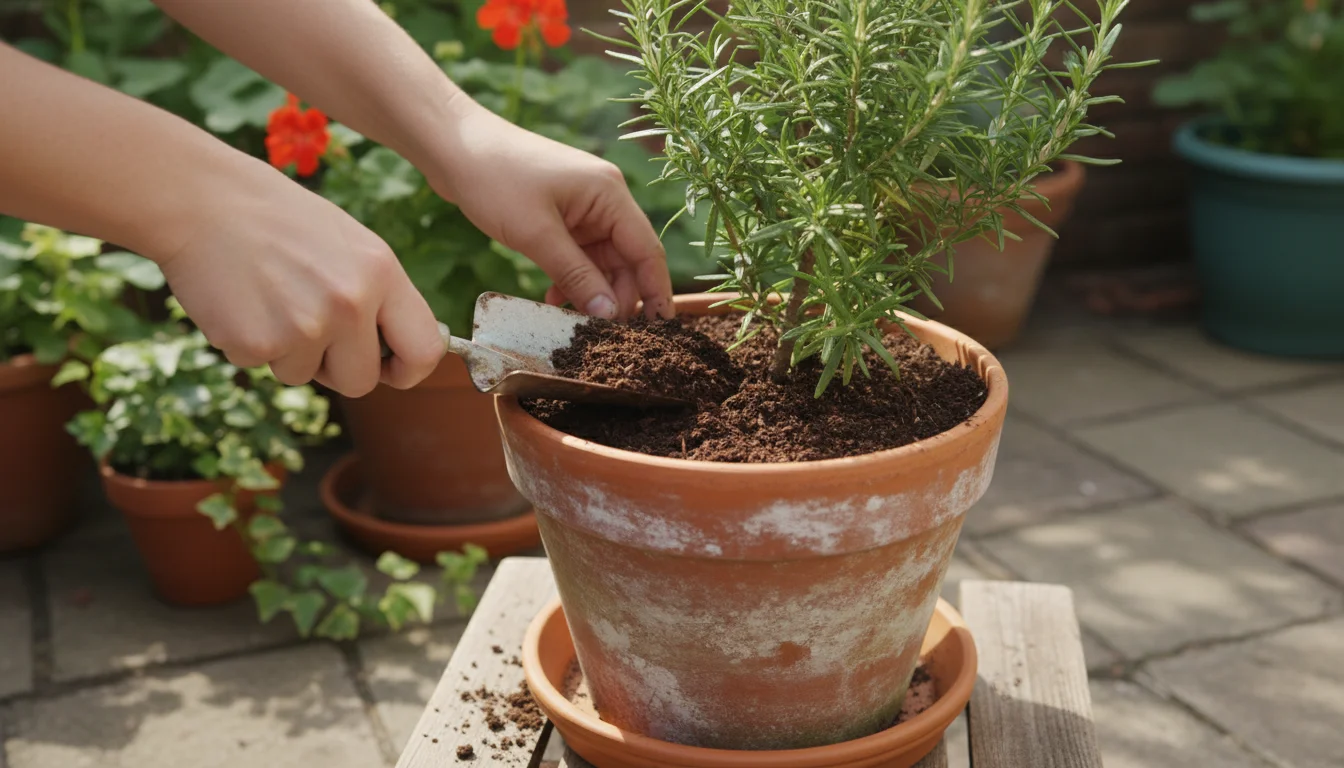
Nourishing Through Heat: Fertilizing and Soil Health
While proper nutrition is vital for plant health, fertilizing during intense summer heat requires a cautious approach. Plants under stress prioritize survival over growth, and excessive fertilization can exacerbate their struggle. Focus on building healthy soil as a long-term strategy for resilience.
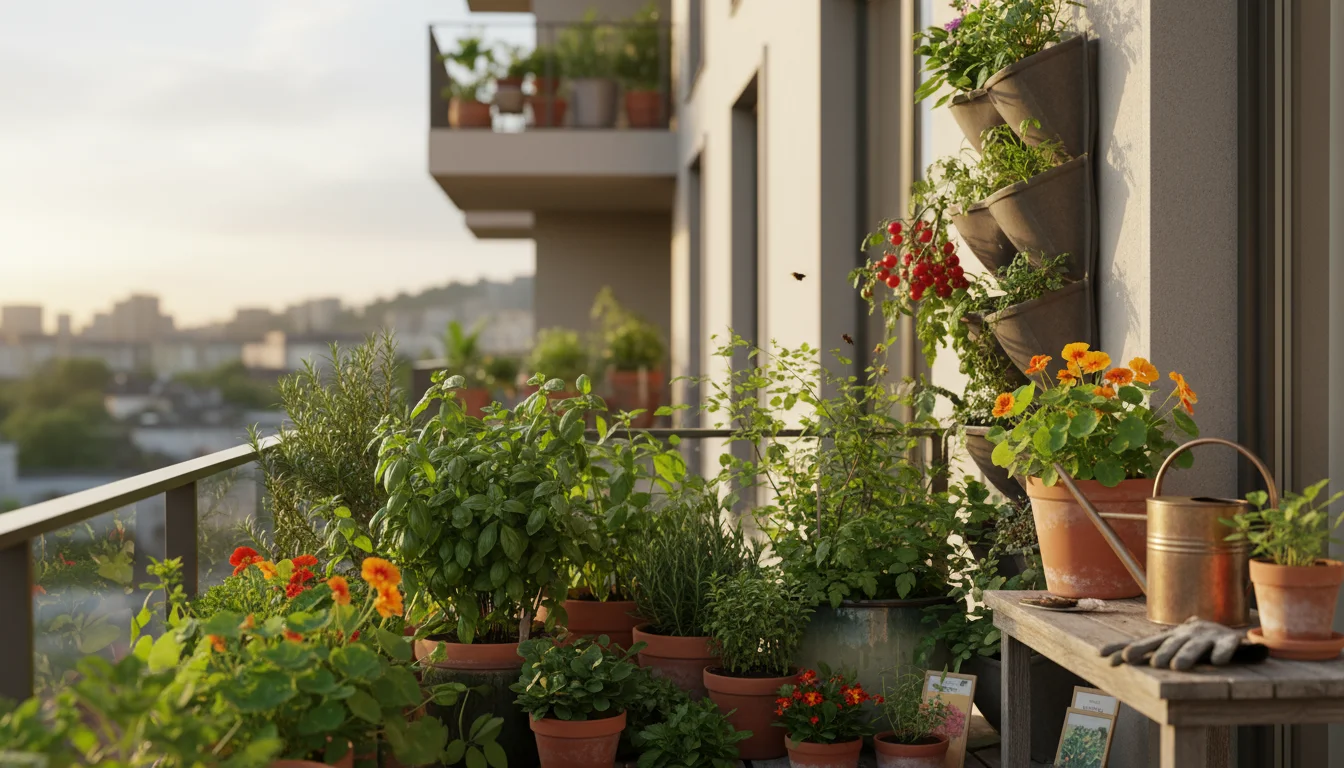
Fertilizing During Heatwaves: Less is More
When temperatures are soaring, it is generally best to avoid fertilizing.
- Why Avoid Fertilizing: Fertilizers, especially those high in nitrogen, promote lush vegetative growth. This new, tender growth is particularly vulnerable to heat and drought stress. Additionally, fertilizers are salts, and when applied to stressed plants, they can draw moisture out of the roots, leading to “fertilizer burn” and further dehydration.
- When to Fertilize: If your plants genuinely need a boost, apply a balanced, organic liquid fertilizer at half strength during cooler periods, preferably in the early morning after a thorough watering. Resume regular fertilization schedules once the heatwave subsides and temperatures return to normal.
- Slow-Release Options: If you use slow-release fertilizers, ensure they are incorporated into the soil at planting time or early in the growing season. Their gradual nutrient release is less likely to shock plants during heat spikes.
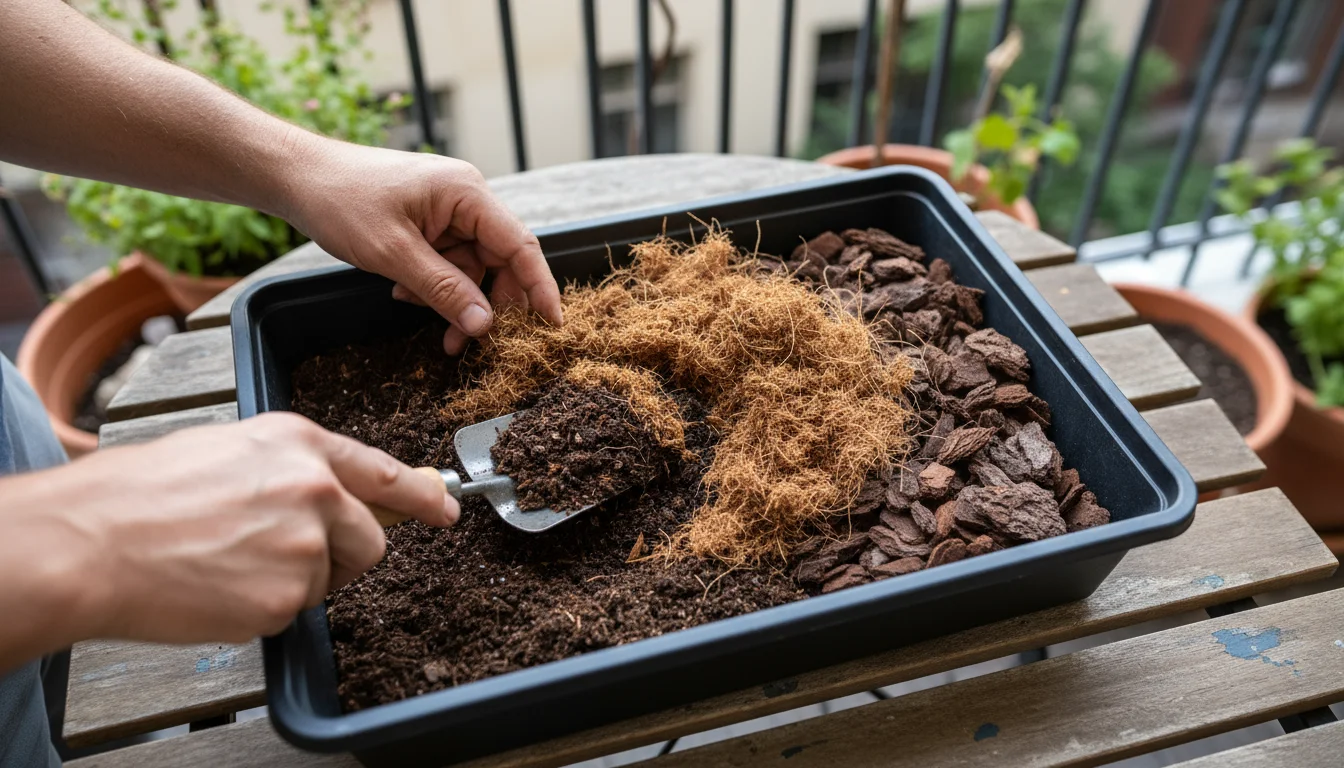
Building Healthy Soil: The Foundation of Resilience
Healthy soil is the ultimate buffer against environmental stress. It improves water retention, aeration, and nutrient availability, making your plants more robust.
- Organic Matter is Key: Incorporate plenty of organic matter into your garden beds and potting mixes. Compost, well-rotted manure, and leaf mold improve soil structure, allowing it to hold water like a sponge while also providing excellent drainage. For every 1-2 inches of existing garden soil, aim to mix in 2-4 inches of compost. This creates a rich, friable texture that roots love.
- Peat-Free Potting Mixes: For containers, choose high-quality, peat-free potting mixes. These mixes often use coco coir, composted bark, and other sustainable materials that offer superior water retention and aeration. Peat extraction has environmental concerns, and sustainable alternatives perform just as well, if not better. Look for mixes specifically formulated for containers that emphasize moisture retention.
- Improve Drainage: While moisture retention is important, so is drainage. Waterlogged soil suffocates roots. Ensure your containers have adequate drainage holes. In garden beds, amending heavy clay soil with organic matter improves its structure and prevents water from pooling.
- Microbial Activity: A healthy soil teems with beneficial microorganisms. These microbes help break down organic matter, making nutrients available to plants, and some even help roots absorb water more efficiently. Avoid harsh chemical pesticides or fertilizers that can harm this vital soil life.
By focusing on enriching your soil, you provide a resilient foundation that helps your plants withstand periods of summer heat stress plants much more effectively.
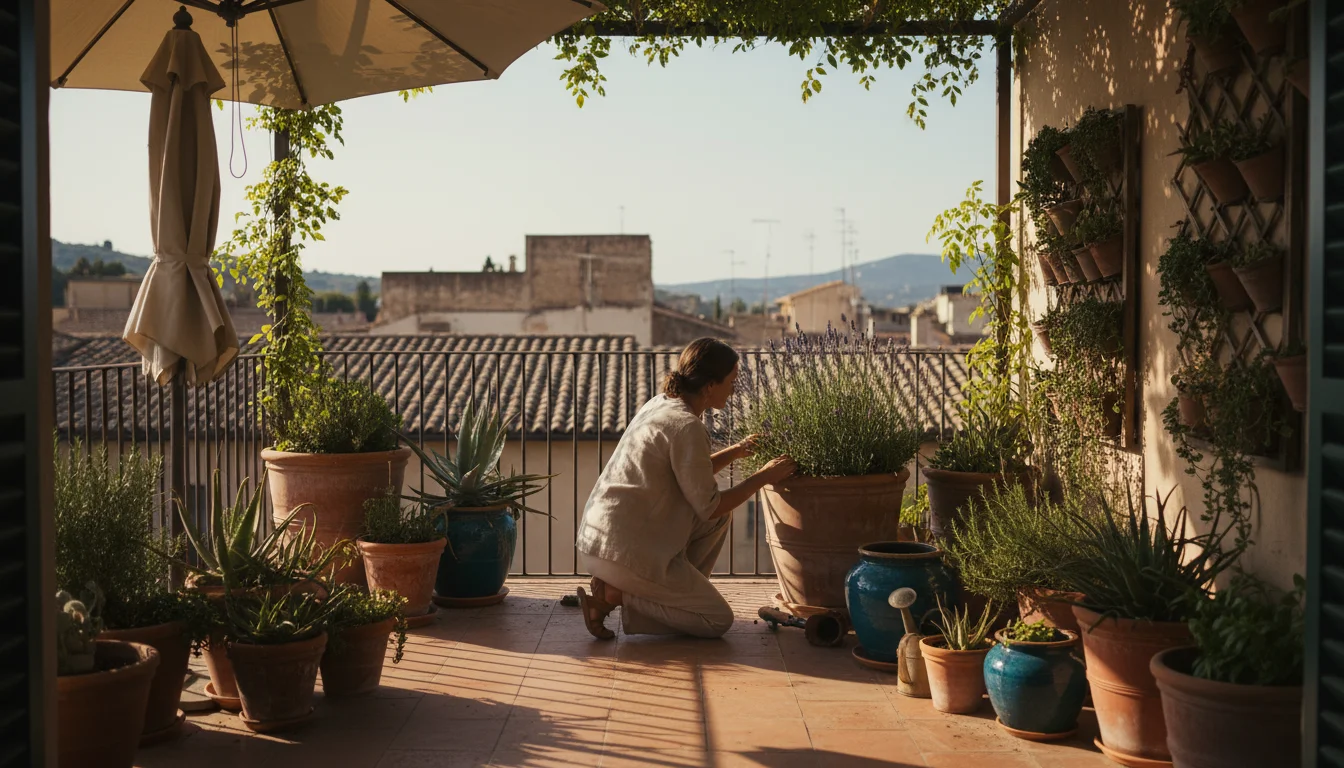
Long-Term Resilience: Garden Design and Recovery
Beyond immediate care during a heatwave, designing your small garden with long-term resilience in mind can dramatically reduce future struggles with heat stress. Planning ahead and knowing how to help plants recover are crucial aspects of sustainable gardening.
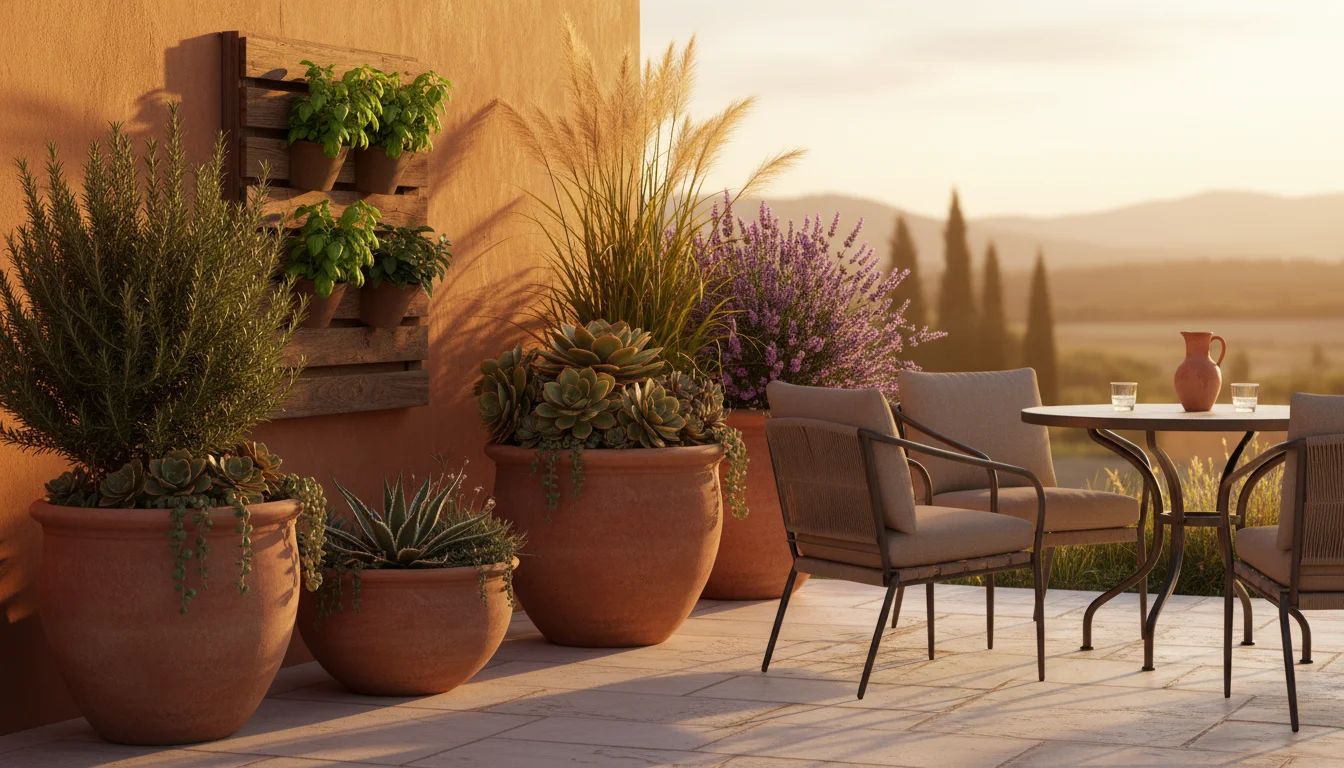
Smart Garden Design for Heat Resistance
Consider these elements when planning your small garden space:
- Plant Selection: Choose plants known for their heat and drought tolerance. Many native plants are naturally adapted to local climate extremes. Succulents, cacti, lavender, rosemary, sedum, and certain ornamental grasses thrive in hot, sunny conditions. Research plants suitable for your specific growing zone and sun exposure.
- Strategic Placement: Place sun-loving, heat-tolerant plants in the hottest, most exposed areas of your garden. Reserve shadier spots for plants that prefer cooler conditions, such as many herbs, leafy greens, and some delicate flowers. Use existing structures like fences, walls, or even taller plants to cast natural afternoon shade where needed.
- Vertical Gardening and Trellises: Vertical gardens can utilize limited space efficiently, but they can also expose plants to more intense sun and wind, leading to faster drying. Position vertical gardens or trellises to benefit from morning sun while being shielded from the harshest afternoon rays, perhaps against an east-facing wall.
- Pervious Surfaces: Replace heat-absorbing concrete or asphalt with permeable surfaces like gravel, pavers with gaps, or even small areas of grass. These materials absorb less heat and allow rainwater to infiltrate the soil, reducing ambient temperatures.
- Water Harvesting: Install a small rain barrel to collect rainwater. This provides a sustainable source of soft, chlorine-free water for your plants, reducing your reliance on tap water and promoting water-wise gardening practices.
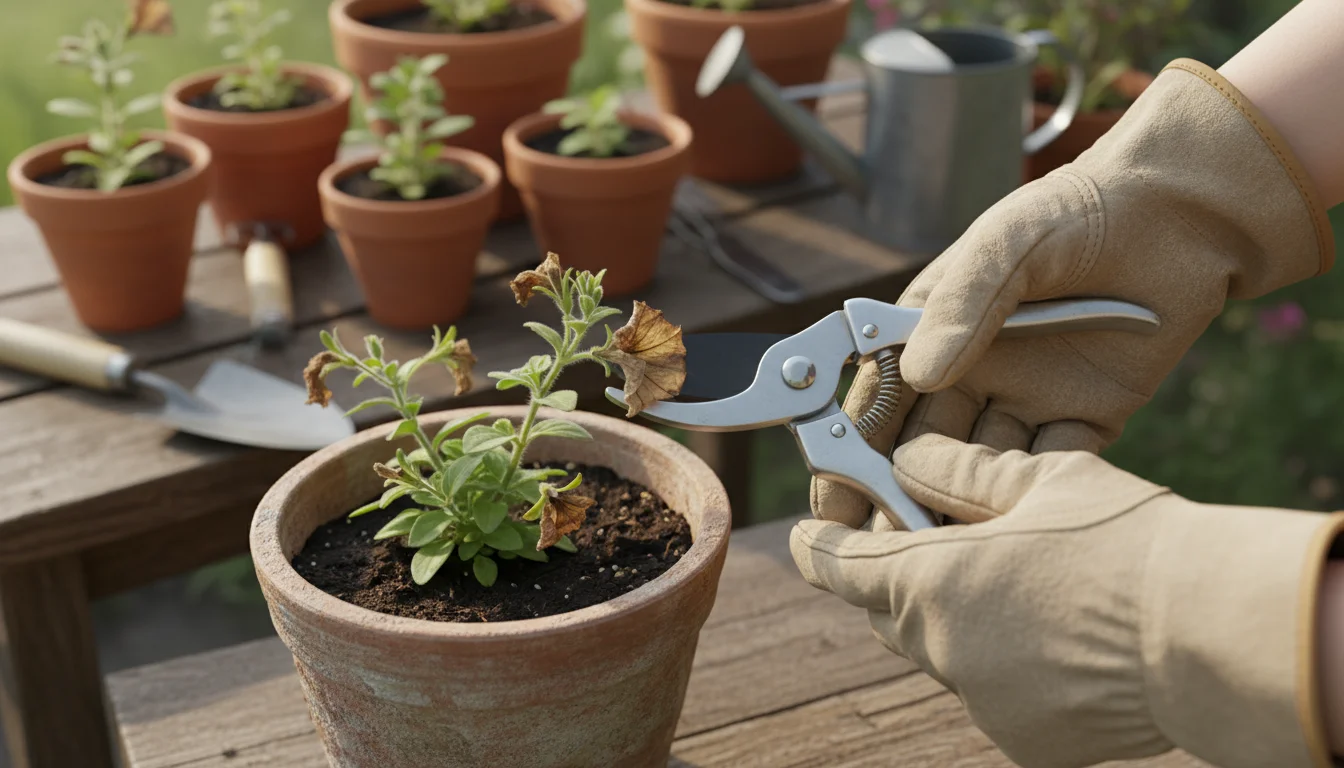
Post-Heatwave Recovery: Helping Your Plants Bounce Back
Once the heatwave breaks, your plants still need care to recover.
- Assess Damage: Wait a few days for temperatures to normalize before assessing the full extent of the damage. Some wilting may reverse, but severely scorched leaves will remain.
- Prune Damaged Foliage: Remove any crispy, brown, or dead leaves and stems. Use clean, sharp pruners. This helps the plant redirect energy to healthy new growth rather than trying to sustain damaged parts. Be careful not to over-prune, as healthy leaves still contribute to photosynthesis.
- Gradual Return to Routine: Do not immediately revert to heavy fertilization or drastically change watering habits. Continue deep, thorough watering summer style, and consider a diluted, balanced liquid fertilizer only after new growth appears and temperatures are consistently moderate.
- Monitor for Pests and Diseases: Stressed plants are more vulnerable to pests and diseases. Inspect your plants regularly for any signs of trouble. Common culprits include spider mites, which thrive in hot, dry conditions. Address any infestations promptly with organic pest control methods like insecticidal soap.
- Provide Ongoing Support: Ensure mulching is adequate, and continue to provide afternoon shade if your plants still show signs of struggle. Long-term health improvements are built on consistent, thoughtful care.
By integrating these design principles and recovery strategies, you foster a resilient garden that can withstand the challenges of extreme summer heat, ensuring your small garden remains productive and beautiful.
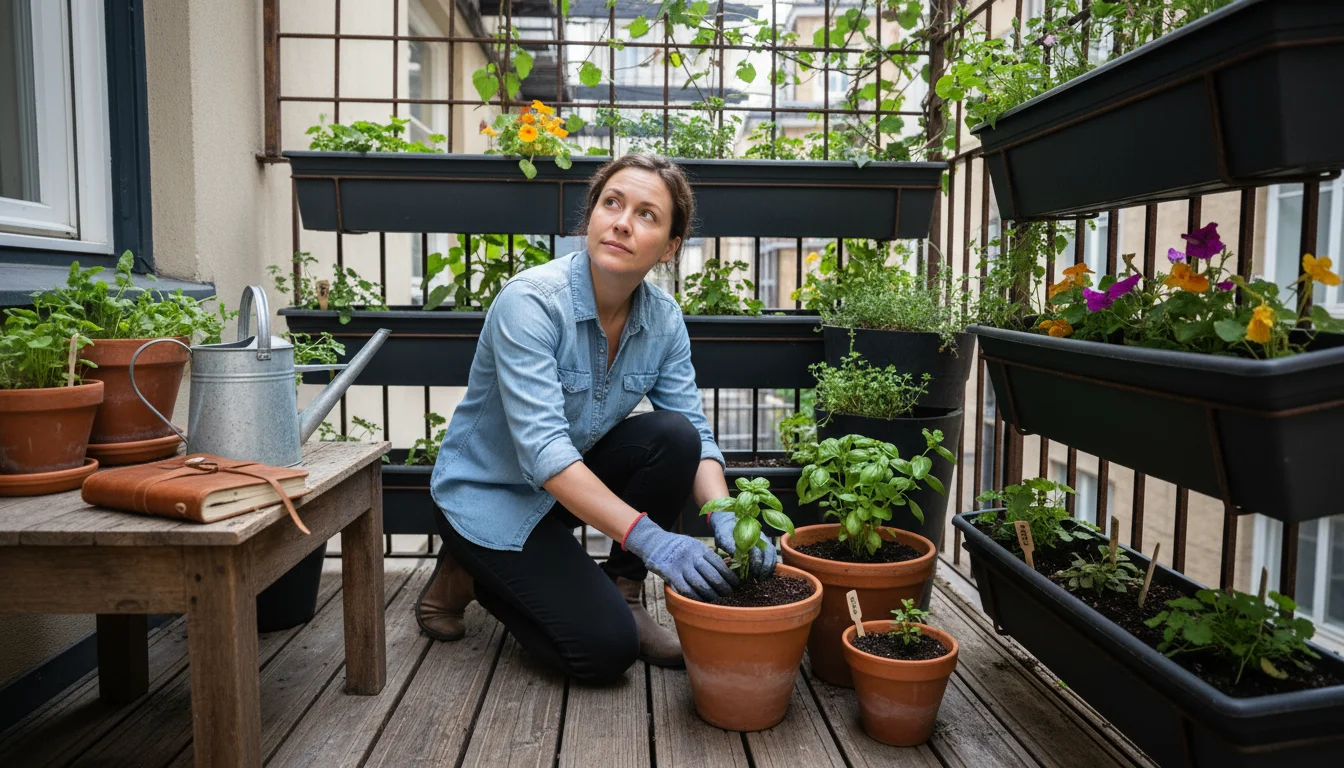
Frequently Asked Questions
How often should I water my container plants during a heatwave?
During a heatwave, container plants often need daily watering, sometimes even twice a day for very thirsty species or small pots. Always check the soil moisture first by sticking your finger two inches deep. If it feels dry, water thoroughly until it drains from the bottom. The goal is consistent moisture, not waterlogging.
Can I spray water on my plants’ leaves to cool them down?
While misting might provide very temporary relief, it is generally not recommended during the day. Water droplets can act as magnifying glasses in direct sunlight, scorching leaves. Wet leaves also increase the risk of fungal diseases, especially if they remain wet into the evening. Focus on deep soil watering and providing shade instead.
My plants are wilting, but the soil is wet. What is happening?
If plants are wilting despite moist soil, they are likely experiencing heat stress, not dehydration. The plant struggles to absorb water fast enough to compensate for rapid transpiration in extreme heat. Moving the plant to shade, increasing air circulation, and allowing the soil to slightly dry before the next watering might help. Overwatering can also cause wilting due to root suffocation, so ensure proper drainage.
What are the best plants for a small garden that can handle summer heat?
Consider heat-tolerant plants such as lavender, rosemary, sedum, portulaca, purslane, zinnia, cosmos, and many varieties of salvia. Succulents and cacti are also excellent choices for sunny, hot spots. Always choose plants suited for your specific USDA hardiness zone and local climate conditions.
Is it safe to move plants indoors during a heatwave?
Yes, moving potted plants indoors during extreme heat is an excellent plant protection strategy, especially for more sensitive varieties. Ensure they receive adequate light indoors, perhaps near a bright window, and avoid placing them in direct drafts from air conditioning units, which can also cause stress. Gradually reintroduce them to outdoor conditions once temperatures moderate.
For research-based plant care guidance, visit
Chicago Botanic Garden,
New York Botanical Garden,
Royal Horticultural Society (RHS), and
University of Minnesota Extension.
Disclaimer: This article is for informational purposes only and is not a substitute for professional advice. Consult local extension services for region-specific recommendations.
